Step One
Completion requirements
Please read this background information on what it was like to travel from Europe, for example, to the United States. After you read this, you will have the chance to read some first-hand accounts of the journeys.
The voyage to the United States sometimes began an entire year before the immigrants planned on leaving. Many spent months before their departure preparing things like salted meat, bread, cheese, and butter for the voyage. Often immigrants had to bring with them all the food that they would need for the whole trip. They had to apply for any papers that they would need to travel like visas, medical documents, or proof of citizenship. They also had to choose their destination and plan the route they would take over land and often these decisions were based on second-hand information gathered from rumors or letters from other immigrants.
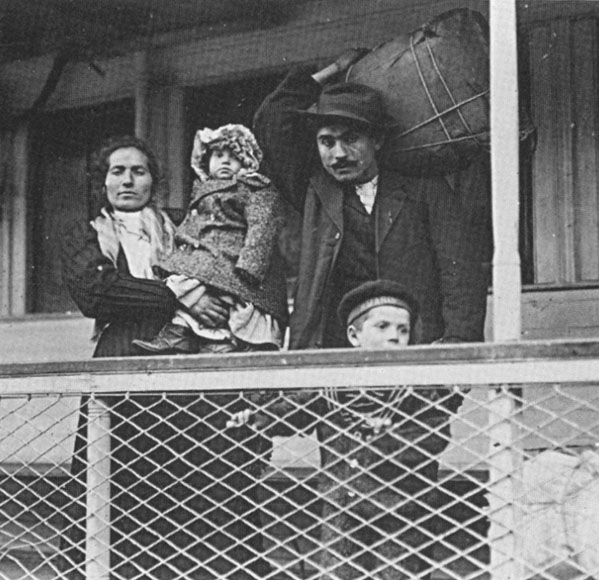
When they actually left home, they would sell all of the property they could not carry with them or give it away to family and friends that were staying behind. This was a difficult time emotionally because many knew they would never see their family or friends again. For many people it was also a scary experience because it was their first time away from home and the first time they had left the boundary of their village.
It took a long time just to get to the port city where they would board the ship. This trip in itself was difficult and sometimes took up to one year. Once at the port city, conditions were difficult. There were thieves and con-artists who would take advantage of them. Often immigrants were sold counterfeit tickets or charged excessive rates for room and board while waiting for their ship to sail. Finally, they had to pick the ship they felt was the best looking without any evidence as to the ship's seaworthiness and then wait for enough passengers to book tickets so that the ship could sail. Ticket prices during the time of sailing ships varied from ship to ship so it was hard to determine a fair price.
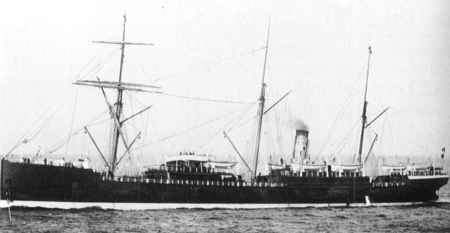
In the time of sailing ships, the voyage to the United States took 44 days on average, but it was not uncommon to be on a ship that took four months to reach the United States. The sailing ships were actually built to haul cargo, not passengers. The cargo area carried timber, cotton, and tobacco from the United State to Europe and then on the return trip immigrants were put into the cargo holds. The area they were in was called steerage, which was the area below the deck where the steering apparatus was located. Steerage was usually 5 1/2 feet high, 75 feet long and 25 feet wide and held anywhere from 400 to 1000 passengers. Europe did have laws that limited the number of passengers the ship could carry but captains often found ways to get around this law. They simply loaded the allowed number at one port and then went to a second port and added more passengers.
There were a few first class passengers on board, but they were given plenty of room and wonderful on-board conditions. Often, the ship carried animals on board just to feed the ten to twelve pampered first class passengers.
Until 1850, steerage passengers could not rely on the ship to provide food, utensils, or bedding. They had to bring with them enough food and supplies to last the entire trip, even if the voyage was extended because of poor weather or primitive navigation. Their bread often became moldy, the fish and meat often rotted, and they frequently ran out of supplies or were robbed by someone else who had already run out of supplies. When this happened, they had to purchase food from the captain at high rates. Death from starvation was not uncommon, especially among young children and the elderly. Even when they did have food to cook, there were usually only two rooms that contained either an open fire or a stove and the passengers often fought with each other for the use of the room.
The crowded conditions did not create a sanitary or safe environment on board the ship. These vessels were overcrowded and filthy and this led to various problems. There were numerous outbreaks of dysentery, cholera, typhoid fever, and lice. There was no place to wash up and the passengers had to eat among their bedding and baggage, creating a messy environment. When a storm hit at sea, the overhead hatches were shut to keep out the seawater. This caused whatever poor ventilation was reaching steerage to be eliminated completely. During the summer months the heat would be unbearable and it was not uncommon for deaths to occur under these conditions. Sometimes it took days before the hatches would be reopened and the air inside steerage became horrid smelling and very stuffy.
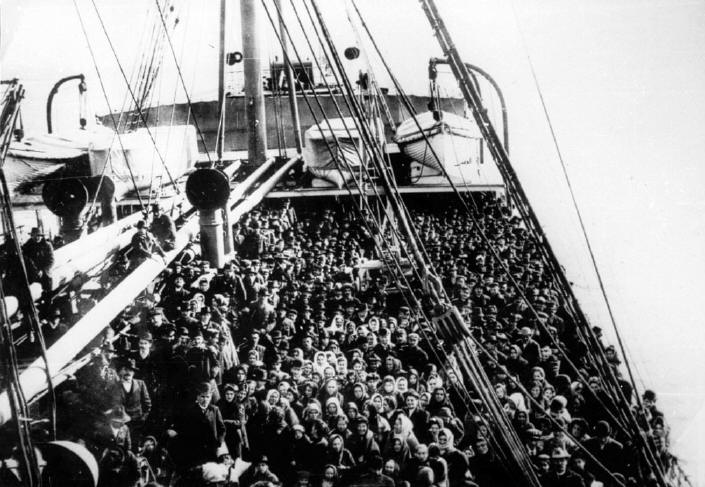
There were good times on board these vessels. Many passengers had never been at sea (which did cause a fair amount of seasickness) and they were stunned by the sea life they saw while on the journey. On clear days the steerage passengers were allowed on deck for at least a few hours and would often use that time for forms of entertainment. Children would play on deck with homemade toys, men and young boys would help the sailors make repairs, and the women could sit and talk in the fresh air, although some people at this time still feared the fresh air and felt that it could make them sick. There were also worship services and sometimes even music and dancing. There were some lasting friendships that were made on board the ship. No matter the conditions, millions who survived the experience felt the cost was worth it for the chance they would have in the United States.
Various factors improved the conditions the immigrants faced while making the voyage across the ocean to the United States. The United States and Europe passed a series of laws meant to improve the conditions on board the ships. In 1850 the United States required that shipowners or agents provide food or daily rations for the steerage passengers. They also said that there must be adequate toilets, separate quarters for women and men, at least two ventilation areas that were open even during storms, and that all ships with over 500 passengers had to have a doctor on board. Unfortunately, these rules were not enforced very well and even when they were enforced the penalties were not very severe.
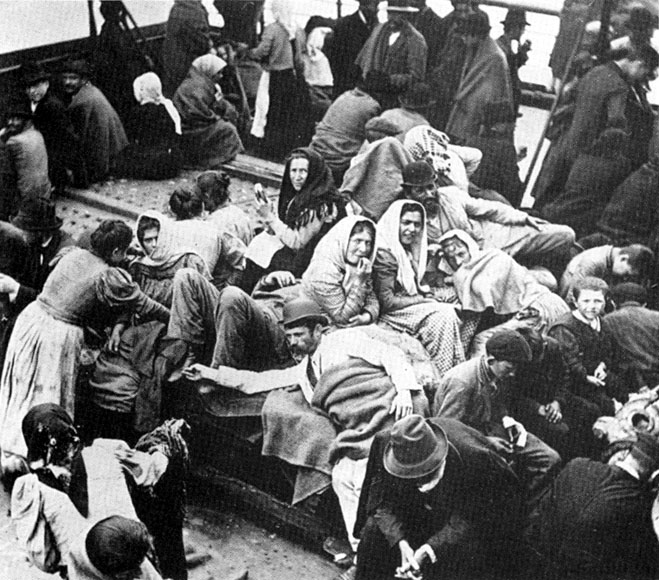
The 1882 Immigration Act helped improve conditions greatly because it required that ships maintain the expense of immigrants not allowed entry into the United States. This resulted in better conditions for the immigrants so that they were healthy enough to pass inspection.
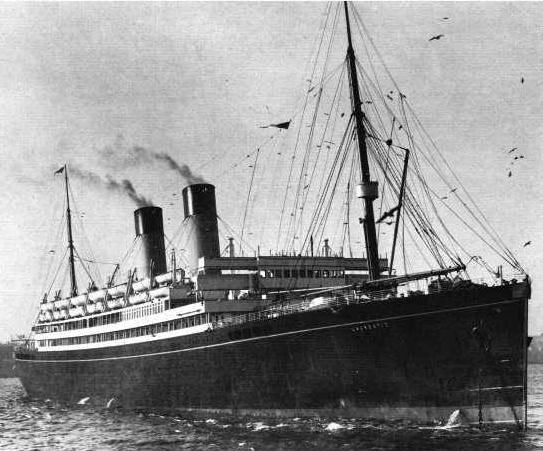
By far the greatest improvement was the change from sailing ships to steamships in the mid-1870s. By 1882, 99% of passengers were coming to the United States on one of the 48 steamships that crossed the Atlantic. Although the on-board conditions were not really that much better, the average trip by 1897 was only five days long.
The voyage to the United States sometimes began an entire year before the immigrants planned on leaving. Many spent months before their departure preparing things like salted meat, bread, cheese, and butter for the voyage. Often immigrants had to bring with them all the food that they would need for the whole trip. They had to apply for any papers that they would need to travel like visas, medical documents, or proof of citizenship. They also had to choose their destination and plan the route they would take over land and often these decisions were based on second-hand information gathered from rumors or letters from other immigrants.

When they actually left home, they would sell all of the property they could not carry with them or give it away to family and friends that were staying behind. This was a difficult time emotionally because many knew they would never see their family or friends again. For many people it was also a scary experience because it was their first time away from home and the first time they had left the boundary of their village.
It took a long time just to get to the port city where they would board the ship. This trip in itself was difficult and sometimes took up to one year. Once at the port city, conditions were difficult. There were thieves and con-artists who would take advantage of them. Often immigrants were sold counterfeit tickets or charged excessive rates for room and board while waiting for their ship to sail. Finally, they had to pick the ship they felt was the best looking without any evidence as to the ship's seaworthiness and then wait for enough passengers to book tickets so that the ship could sail. Ticket prices during the time of sailing ships varied from ship to ship so it was hard to determine a fair price.

In the time of sailing ships, the voyage to the United States took 44 days on average, but it was not uncommon to be on a ship that took four months to reach the United States. The sailing ships were actually built to haul cargo, not passengers. The cargo area carried timber, cotton, and tobacco from the United State to Europe and then on the return trip immigrants were put into the cargo holds. The area they were in was called steerage, which was the area below the deck where the steering apparatus was located. Steerage was usually 5 1/2 feet high, 75 feet long and 25 feet wide and held anywhere from 400 to 1000 passengers. Europe did have laws that limited the number of passengers the ship could carry but captains often found ways to get around this law. They simply loaded the allowed number at one port and then went to a second port and added more passengers.
There were a few first class passengers on board, but they were given plenty of room and wonderful on-board conditions. Often, the ship carried animals on board just to feed the ten to twelve pampered first class passengers.
Until 1850, steerage passengers could not rely on the ship to provide food, utensils, or bedding. They had to bring with them enough food and supplies to last the entire trip, even if the voyage was extended because of poor weather or primitive navigation. Their bread often became moldy, the fish and meat often rotted, and they frequently ran out of supplies or were robbed by someone else who had already run out of supplies. When this happened, they had to purchase food from the captain at high rates. Death from starvation was not uncommon, especially among young children and the elderly. Even when they did have food to cook, there were usually only two rooms that contained either an open fire or a stove and the passengers often fought with each other for the use of the room.
The crowded conditions did not create a sanitary or safe environment on board the ship. These vessels were overcrowded and filthy and this led to various problems. There were numerous outbreaks of dysentery, cholera, typhoid fever, and lice. There was no place to wash up and the passengers had to eat among their bedding and baggage, creating a messy environment. When a storm hit at sea, the overhead hatches were shut to keep out the seawater. This caused whatever poor ventilation was reaching steerage to be eliminated completely. During the summer months the heat would be unbearable and it was not uncommon for deaths to occur under these conditions. Sometimes it took days before the hatches would be reopened and the air inside steerage became horrid smelling and very stuffy.

There were good times on board these vessels. Many passengers had never been at sea (which did cause a fair amount of seasickness) and they were stunned by the sea life they saw while on the journey. On clear days the steerage passengers were allowed on deck for at least a few hours and would often use that time for forms of entertainment. Children would play on deck with homemade toys, men and young boys would help the sailors make repairs, and the women could sit and talk in the fresh air, although some people at this time still feared the fresh air and felt that it could make them sick. There were also worship services and sometimes even music and dancing. There were some lasting friendships that were made on board the ship. No matter the conditions, millions who survived the experience felt the cost was worth it for the chance they would have in the United States.
Various factors improved the conditions the immigrants faced while making the voyage across the ocean to the United States. The United States and Europe passed a series of laws meant to improve the conditions on board the ships. In 1850 the United States required that shipowners or agents provide food or daily rations for the steerage passengers. They also said that there must be adequate toilets, separate quarters for women and men, at least two ventilation areas that were open even during storms, and that all ships with over 500 passengers had to have a doctor on board. Unfortunately, these rules were not enforced very well and even when they were enforced the penalties were not very severe.

The 1882 Immigration Act helped improve conditions greatly because it required that ships maintain the expense of immigrants not allowed entry into the United States. This resulted in better conditions for the immigrants so that they were healthy enough to pass inspection.

By far the greatest improvement was the change from sailing ships to steamships in the mid-1870s. By 1882, 99% of passengers were coming to the United States on one of the 48 steamships that crossed the Atlantic. Although the on-board conditions were not really that much better, the average trip by 1897 was only five days long.
Last modified: Monday, July 30, 2012, 7:51 PM